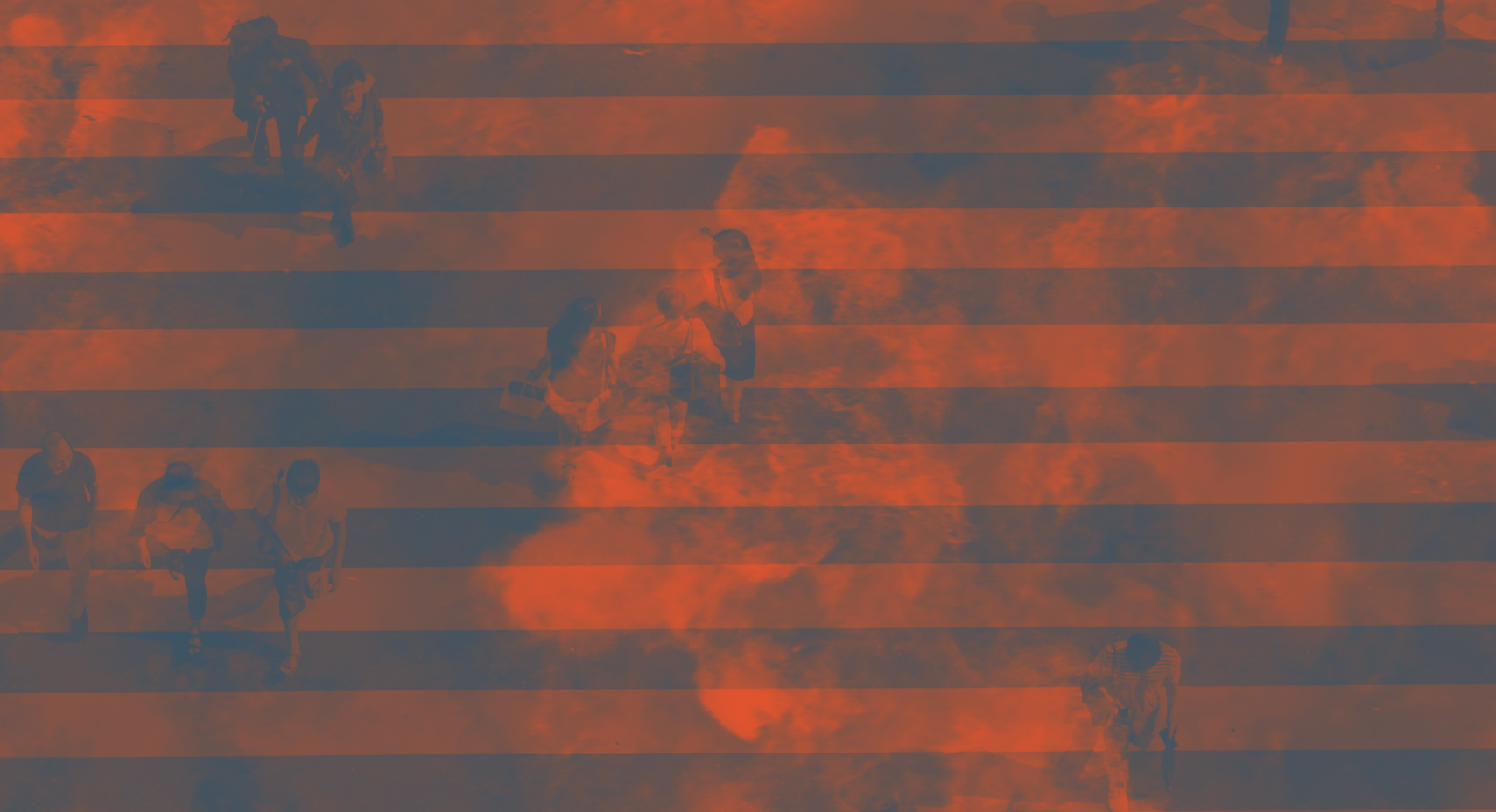Exploring Changes in Movement Patterns Amid Violent Activities

Abstract
Walking amidst Chaos is a conceptual project which aims at seeing deviations in movement patterns of people in the wake of violent activities and conflicts within an urban fabric. The project is developed through a method of agent-based simulation to see the extent of change in movement patters of people when a violent activity arises. This project as been made as an inspiration from an ongoing investigation of conflicts and violent activities in Manipur, India.
The project delves into the spatial dynamics of human mobility and the influential factors at play, with a specific focus on instances of conflict and disruption in today’s landscapes of migration and contention. It showcases and examines how spatial analysis techniques can be utilized moving forward to record, challenge, alleviate, and plan for mobility conditions within the Anthropocene era

Methodology
The methodology followed is through monitoring the movement behaviours of agents depending on certain conditions in certain context. This is achieved through agent-based simulation. Agent-based simulation is a computer simulation method used to study the interactions between people, things, places, and time and their behaviours. These stochastic models are developed from scratch, with individual agents, typically representing individuals in epidemiology, being equipped with distinct attributes. In this particular project agents are people moving through the roads of the city to a certain point in the city, hence the behaviour that agents shows is attraction to a certain part. However, introducing obstacles like violent activities and explosions in the movement paths of the agents would make the agents behave differently.
Scope
This project is a part of the computation urban design seminar where the scope of this project is at the conceptual level. The agent-based simulation is run over a smaller sample size to study agent behaviours when unanticipated forces come to play with their movement behaviours. The project however does not look into the investigation of violence in Manipur, but draws parallels from the events to understand forces and behaviours.
Violence and Conflicts affect Mobility
As participants and influencers in urban life, mobility naturally encourages one to contemplate the infrastructure supporting the movement of individuals and commodities. In this simulation, we delve into less tangible yet equally significant aspects of mobility as a lens for studying the Anthropocene and its impacts. Our attention centers on the nexus of conflict and mobility, serving as a mechanism to investigate the dynamics of people, cultures, information, capital, and ecosystems. These flows not only shape our modern world but are also shaped by it, offering valuable insights into contemporary design paradigms.

Steps broken down to outline the simulation better
- Creating built context: A sample context is created that conceptually defines the built fabric of any city
- Agent Identification: The agents have been identified as the people within the city where their conventional behaviour is to move to a certain place (a manually identified point within the city)
- Defining Governing Behaviours: The identified agents move to an physically identified destination through the empty spaces between the built structures and through the road networks of the sample, ignoring completely the spaces with buildings
- Introduction of Obstacles: Plotting randomised points of violence of varying magnitudes shown through the spheres that show the impact of the violent events, across the built context
- Effect of these obstacles: With the occurrence of the violent conflicts all the agents with the impact area of the events get negated and killed. This leaves lesser agents to be simulated till the detination
- Changed Governing Behaviours: The remaining agent’s goal is still to reach the destination but by re-routing their movement path because of the occurrence of violent conflicts. So now the agents not only have a destination to reach to but also have to keep their distance from the violent events
- Loop: Looping through the above mentioned steps gives us some people who died because of the violent activities , some people who move away from the activities and some which reach the destination and annihilate themselves at the destination
Ultimately, because of frequent occurrence of violent activities and their overlap with the built environment some agents get stuck far behind in the blocks created by the overlap and there need to be more computation expense that
Subsequent Evolution
Moving further on with this simulation it could be possible to map migratory patterns and movement patterns of people within an urban context of violence and changes in these patterns because of the emergence of all the conflict. Being able to map these patterns through agent-based simulation becomes a tool for the government and the local governing bodies to plan evacuation routes for the people affected by events of conflicts. The patterns of violent activities can also be mapped and predicted from existing patterns in order to stop and reinforce identified places of possible violence with higher protection.

